Houbing Song
Integrating Neurosymbolic AI in Advanced Air Mobility: A Comprehensive Survey
Aug 10, 2025Abstract:Neurosymbolic AI combines neural network adaptability with symbolic reasoning, promising an approach to address the complex regulatory, operational, and safety challenges in Advanced Air Mobility (AAM). This survey reviews its applications across key AAM domains such as demand forecasting, aircraft design, and real-time air traffic management. Our analysis reveals a fragmented research landscape where methodologies, including Neurosymbolic Reinforcement Learning, have shown potential for dynamic optimization but still face hurdles in scalability, robustness, and compliance with aviation standards. We classify current advancements, present relevant case studies, and outline future research directions aimed at integrating these approaches into reliable, transparent AAM systems. By linking advanced AI techniques with AAM's operational demands, this work provides a concise roadmap for researchers and practitioners developing next-generation air mobility solutions.
BA-Net: Bridge Attention in Deep Neural Networks
Oct 10, 2024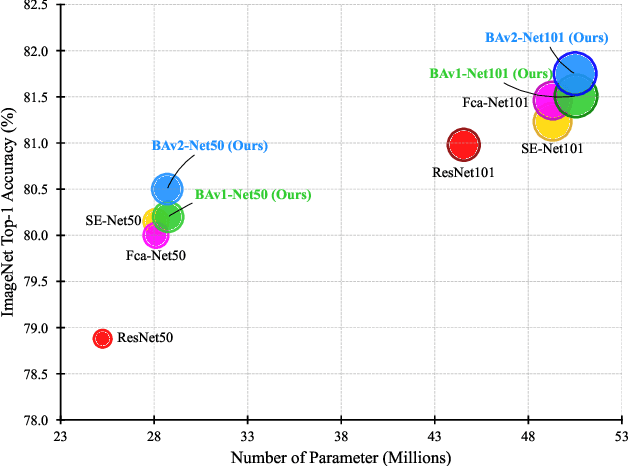

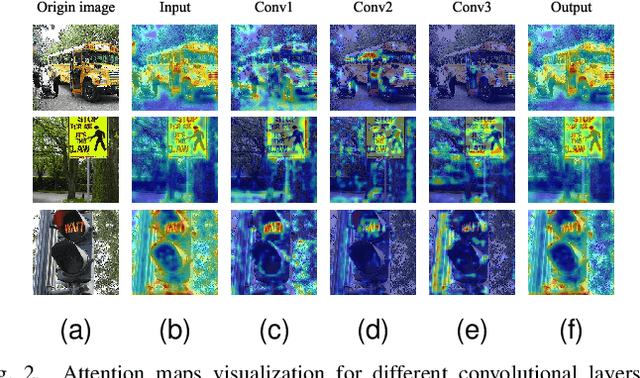
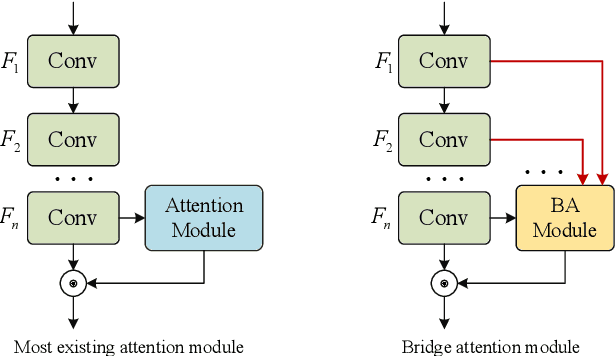
Abstract:Attention mechanisms, particularly channel attention, have become highly influential in numerous computer vision tasks. Despite their effectiveness, many existing methods primarily focus on optimizing performance through complex attention modules applied at individual convolutional layers, often overlooking the synergistic interactions that can occur across multiple layers. In response to this gap, we introduce bridge attention, a novel approach designed to facilitate more effective integration and information flow between different convolutional layers. Our work extends the original bridge attention model (BAv1) by introducing an adaptive selection operator, which reduces information redundancy and optimizes the overall information exchange. This enhancement results in the development of BAv2, which achieves substantial performance improvements in the ImageNet classification task, obtaining Top-1 accuracies of 80.49% and 81.75% when using ResNet50 and ResNet101 as backbone networks, respectively. These results surpass the retrained baselines by 1.61% and 0.77%, respectively. Furthermore, BAv2 outperforms other existing channel attention techniques, such as the classical SENet101, exceeding its retrained performance by 0.52% Additionally, integrating BAv2 into advanced convolutional networks and vision transformers has led to significant gains in performance across a wide range of computer vision tasks, underscoring its broad applicability.
Explainable AI for Comparative Analysis of Intrusion Detection Models
Jun 14, 2024Abstract:Explainable Artificial Intelligence (XAI) has become a widely discussed topic, the related technologies facilitate better understanding of conventional black-box models like Random Forest, Neural Networks and etc. However, domain-specific applications of XAI are still insufficient. To fill this gap, this research analyzes various machine learning models to the tasks of binary and multi-class classification for intrusion detection from network traffic on the same dataset using occlusion sensitivity. The models evaluated include Linear Regression, Logistic Regression, Linear Support Vector Machine (SVM), K-Nearest Neighbors (KNN), Random Forest, Decision Trees, and Multi-Layer Perceptrons (MLP). We trained all models to the accuracy of 90\% on the UNSW-NB15 Dataset. We found that most classifiers leverage only less than three critical features to achieve such accuracies, indicating that effective feature engineering could actually be far more important for intrusion detection than applying complicated models. We also discover that Random Forest provides the best performance in terms of accuracy, time efficiency and robustness. Data and code available at https://github.com/pcwhy/XML-IntrusionDetection.git
GraphDAC: A Graph-Analytic Approach to Dynamic Airspace Configuration
Jul 29, 2023



Abstract:The current National Airspace System (NAS) is reaching capacity due to increased air traffic, and is based on outdated pre-tactical planning. This study proposes a more dynamic airspace configuration (DAC) approach that could increase throughput and accommodate fluctuating traffic, ideal for emergencies. The proposed approach constructs the airspace as a constraints-embedded graph, compresses its dimensions, and applies a spectral clustering-enabled adaptive algorithm to generate collaborative airport groups and evenly distribute workloads among them. Under various traffic conditions, our experiments demonstrate a 50\% reduction in workload imbalances. This research could ultimately form the basis for a recommendation system for optimized airspace configuration. Code available at https://github.com/KeFenge2022/GraphDAC.git
Multi-Scale U-Shape MLP for Hyperspectral Image Classification
Jul 05, 2023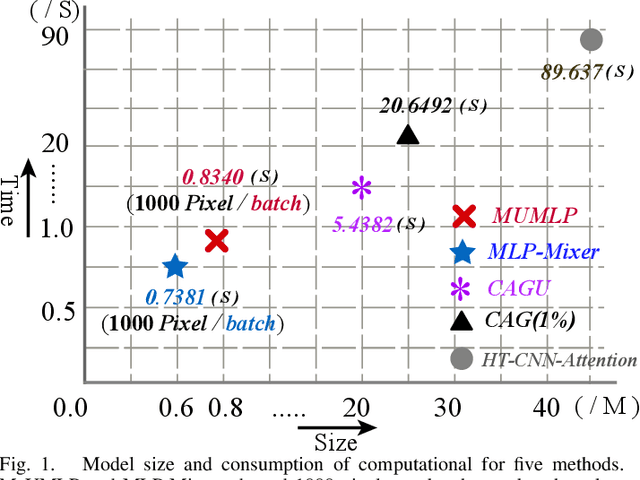
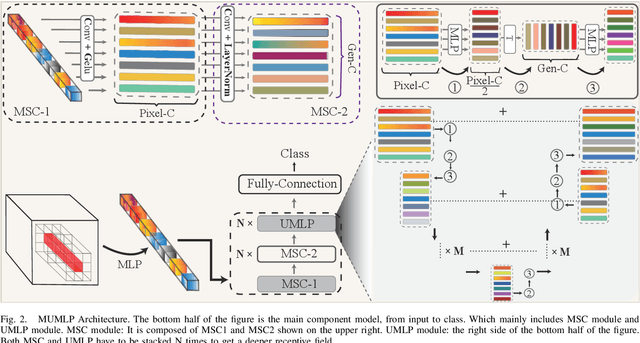
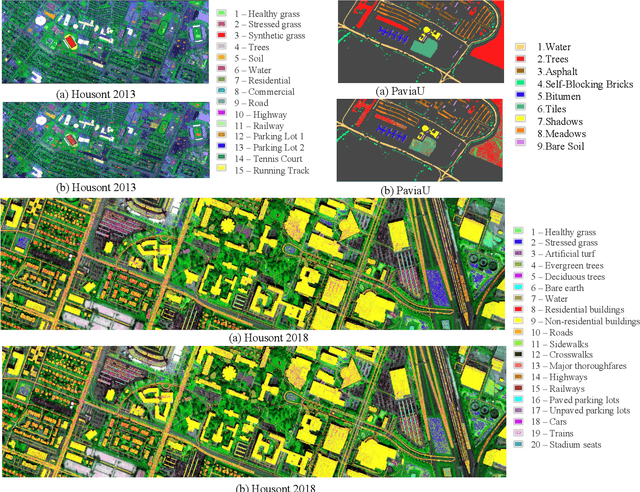

Abstract:Hyperspectral images have significant applications in various domains, since they register numerous semantic and spatial information in the spectral band with spatial variability of spectral signatures. Two critical challenges in identifying pixels of the hyperspectral image are respectively representing the correlated information among the local and global, as well as the abundant parameters of the model. To tackle this challenge, we propose a Multi-Scale U-shape Multi-Layer Perceptron (MUMLP) a model consisting of the designed MSC (Multi-Scale Channel) block and the UMLP (U-shape Multi-Layer Perceptron) structure. MSC transforms the channel dimension and mixes spectral band feature to embed the deep-level representation adequately. UMLP is designed by the encoder-decoder structure with multi-layer perceptron layers, which is capable of compressing the large-scale parameters. Extensive experiments are conducted to demonstrate our model can outperform state-of-the-art methods across-the-board on three wide-adopted public datasets, namely Pavia University, Houston 2013 and Houston 2018
* 5 pages
Efficient and Direct Inference of Heart Rate Variability using Both Signal Processing and Machine Learning
Mar 23, 2023



Abstract:Heart Rate Variability (HRV) measures the variation of the time between consecutive heartbeats and is a major indicator of physical and mental health. Recent research has demonstrated that photoplethysmography (PPG) sensors can be used to infer HRV. However, many prior studies had high errors because they only employed signal processing or machine learning (ML), or because they indirectly inferred HRV, or because there lacks large training datasets. Many prior studies may also require large ML models. The low accuracy and large model sizes limit their applications to small embedded devices and potential future use in healthcare. To address the above issues, we first collected a large dataset of PPG signals and HRV ground truth. With this dataset, we developed HRV models that combine signal processing and ML to directly infer HRV. Evaluation results show that our method had errors between 3.5% to 25.7% and outperformed signal-processing-only and ML-only methods. We also explored different ML models, which showed that Decision Trees and Multi-level Perceptrons have 13.0% and 9.1% errors on average with models at most hundreds of KB and inference time less than 1ms. Hence, they are more suitable for small embedded devices and potentially enable the future use of PPG-based HRV monitoring in healthcare.
SKGHOI: Spatial-Semantic Knowledge Graph for Human-Object Interaction Detection
Mar 15, 2023Abstract:Detecting human-object interactions (HOIs) is a challenging problem in computer vision. Existing techniques for HOI detection heavily rely on appearance-based features, which may not capture other essential characteristics for accurate detection. Furthermore, the use of transformer-based models for sentiment representation of human-object pairs can be computationally expensive. To address these challenges, we propose a novel graph-based approach, SKGHOI (Spatial-Semantic Knowledge Graph for Human-Object Interaction Detection), that effectively captures the sentiment representation of HOIs by integrating both spatial and semantic knowledge. In a graph, SKGHOI takes the components of interaction as nodes, and the spatial relationships between them as edges. Our approach employs a spatial encoder and a semantic encoder to extract spatial and semantic information, respectively, and then combines these encodings to create a knowledge graph that captures the sentiment representation of HOIs. Compared to existing techniques, SKGHOI is computationally efficient and allows for the incorporation of prior knowledge, making it practical for use in real-world applications. We demonstrate the effectiveness of our proposed method on the widely-used HICO-DET datasets, where it outperforms existing state-of-the-art graph-based methods by a significant margin. Our results indicate that the SKGHOI approach has the potential to significantly improve the accuracy and efficiency of HOI detection, and we anticipate that it will be of great interest to researchers and practitioners working on this challenging task.
NoiseCAM: Explainable AI for the Boundary Between Noise and Adversarial Attacks
Mar 09, 2023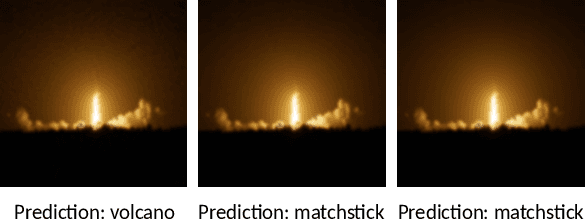
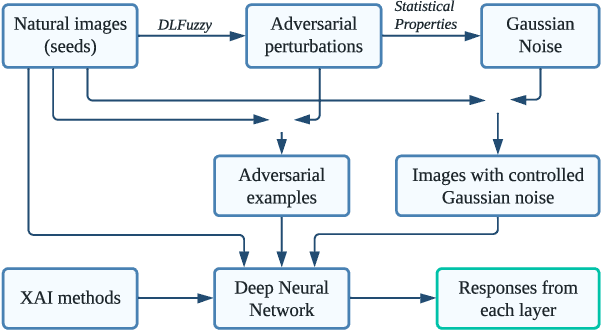
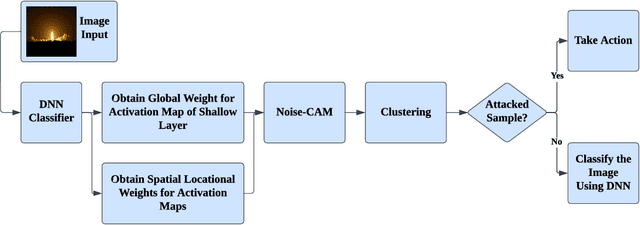

Abstract:Deep Learning (DL) and Deep Neural Networks (DNNs) are widely used in various domains. However, adversarial attacks can easily mislead a neural network and lead to wrong decisions. Defense mechanisms are highly preferred in safety-critical applications. In this paper, firstly, we use the gradient class activation map (GradCAM) to analyze the behavior deviation of the VGG-16 network when its inputs are mixed with adversarial perturbation or Gaussian noise. In particular, our method can locate vulnerable layers that are sensitive to adversarial perturbation and Gaussian noise. We also show that the behavior deviation of vulnerable layers can be used to detect adversarial examples. Secondly, we propose a novel NoiseCAM algorithm that integrates information from globally and pixel-level weighted class activation maps. Our algorithm is susceptible to adversarial perturbations and will not respond to Gaussian random noise mixed in the inputs. Third, we compare detecting adversarial examples using both behavior deviation and NoiseCAM, and we show that NoiseCAM outperforms behavior deviation modeling in its overall performance. Our work could provide a useful tool to defend against certain adversarial attacks on deep neural networks.
Exploring Adversarial Attacks on Neural Networks: An Explainable Approach
Mar 08, 2023Abstract:Deep Learning (DL) is being applied in various domains, especially in safety-critical applications such as autonomous driving. Consequently, it is of great significance to ensure the robustness of these methods and thus counteract uncertain behaviors caused by adversarial attacks. In this paper, we use gradient heatmaps to analyze the response characteristics of the VGG-16 model when the input images are mixed with adversarial noise and statistically similar Gaussian random noise. In particular, we compare the network response layer by layer to determine where errors occurred. Several interesting findings are derived. First, compared to Gaussian random noise, intentionally generated adversarial noise causes severe behavior deviation by distracting the area of concentration in the networks. Second, in many cases, adversarial examples only need to compromise a few intermediate blocks to mislead the final decision. Third, our experiments revealed that specific blocks are more vulnerable and easier to exploit by adversarial examples. Finally, we demonstrate that the layers $Block4\_conv1$ and $Block5\_cov1$ of the VGG-16 model are more susceptible to adversarial attacks. Our work could provide valuable insights into developing more reliable Deep Neural Network (DNN) models.
Communication and Control in Collaborative UAVs: Recent Advances and Future Trends
Feb 23, 2023



Abstract:The recent progress in unmanned aerial vehicles (UAV) technology has significantly advanced UAV-based applications for military, civil, and commercial domains. Nevertheless, the challenges of establishing high-speed communication links, flexible control strategies, and developing efficient collaborative decision-making algorithms for a swarm of UAVs limit their autonomy, robustness, and reliability. Thus, a growing focus has been witnessed on collaborative communication to allow a swarm of UAVs to coordinate and communicate autonomously for the cooperative completion of tasks in a short time with improved efficiency and reliability. This work presents a comprehensive review of collaborative communication in a multi-UAV system. We thoroughly discuss the characteristics of intelligent UAVs and their communication and control requirements for autonomous collaboration and coordination. Moreover, we review various UAV collaboration tasks, summarize the applications of UAV swarm networks for dense urban environments and present the use case scenarios to highlight the current developments of UAV-based applications in various domains. Finally, we identify several exciting future research direction that needs attention for advancing the research in collaborative UAVs.
 Add to Chrome
Add to Chrome Add to Firefox
Add to Firefox Add to Edge
Add to Edge